January 27, 2015 After updating prior Super Bowl posts about the persuasion, impact, influence, and latest trends in Super Bowl Ads, (including this new NFL PSA against domestic violence) it’s imperative to also call out the “repeat offenders”…corporations that consistently produce toxic imagery and narratives in spite of criticism to elicit brand change.
Two standouts are already apparent in the 2015 line-up for lousy cues and baiting outrage, Go Daddy and Carl’s Jr.
Go Daddy gaffes are plentiful with equal opportunity offensiveness in the ONGOING objectification and commodification of living beings, whether women, men, or puppies.
This year Go Daddy hit a new low for me as an animal lover and shelter volunteer, managing to put forth a recklessly irresponsible, tone deaf productization of pets…so much so, that using media with mindfulness has given me pause, wondering if this is yet another one of those popular marketing ploys for baiting outrage and brand building only to pull back with a ‘yes we’ve listened’ approach after gaining eyeballs. If so, I’m even more repulsed. (Update 1/28/15: Called it. And yes, they pulled the ad, and yes I’m “even more repulsed.”)
We’ve all heard the “we’ve changed” message ad nauseum, though admittedly, some corporations like Carl’s Jr. don’t even pretend to crawl out of cretin mode in the low life limbo of brash “meat marketing” raunch which has polluted psyches for years with sophomoric sexualization of “buns and breasts” and “who cares what women think” branding. Carl’s Jr. has relentlessly subjected us to Super Bowl sexism far too long, giving us #SuperBowlBINGO annually.
The renowned French proverb applies here, so it’s imperative that voices are raised to single out corporations with a record of zero on the ethical compass of social responsibility and give ’em all a whack in the assets. Shape up, advertisers…children are our future and unhealthy messages like these need called out early and often.
Today, though, I’m happy to stand down from the media microphone of editorial analysis/advocacy to instead welcome media literacy expert Frank Baker, who frames overall context of this mega-event with helpful tips to deconstruct Super Bowl Ads as an educational experience for students.
Frank Baker’s Media Literacy Clearinghouse is rich with FREE resources including classroom activities, helpful tools and au courant articles to use as a springboard to get students out of the shallow end and dive deep into the messages of persuasion and marketing. Renown for his workshops, speaking and often cited as “the #1 online resource for educators” he’s a media literacy ally that can turn a major pop culture event like The Super Bowl into a lasting lesson of life skills that will serve students far beyond K-12. Enjoy! –Amy Jussel, Shaping Youth
 Teach Media Literacy with Super Bowl Ads
Teach Media Literacy with Super Bowl Ads
(Part one in a two part series reprinted with permission on Shaping Youth via MiddleWeb)
For many years, I have hosted a web page, Using Super Bowl Ads In The Classroom, because I wanted to help educators who haven’t thought about using these popular culture texts in instruction.
You might notice that I use the word “texts.”
TV and other video commercials should be considered as texts because the present information that students can learn to scrutinize closely (analyze) and deconstruct. In fact, the National Council of Teachers of English (NCTE) has long recommended that teachers include “non-print” texts in the classroom.
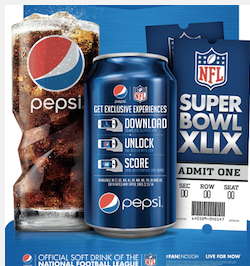 In a study I conducted some years ago, elements of media literacy were found in the English/Language Arts teaching standards of most states. Understanding advertising continues to be an important part of media literacy today. The Common Core ELA standards also speak to the need to engage students in these real-world, popular culture “informational texts.”
In a study I conducted some years ago, elements of media literacy were found in the English/Language Arts teaching standards of most states. Understanding advertising continues to be an important part of media literacy today. The Common Core ELA standards also speak to the need to engage students in these real-world, popular culture “informational texts.”
Standards aside, can there be any doubt that students today are bombarded by commercial messages everywhere they look, on every device they use, and need to be smart and discerning about what they see and hear?
In my media literacy workshops around the nation, I often hear from teachers who are still not comfortable teaching with or about advertising. One reason is a lack of training or the need to simply think all the way through the process. If you find yourself in this category, read on.
The Super Bowl ad extravaganza
In 2015, the Super Bowl game will be viewed by 100+ million people (in the US alone) and the cost of a 30-second ad is estimated at $4.5 million this time around (up 7%). At this stage of the run-up to the February 1 game, a lot of attention (on social media, in the press, and around the office water cooler) has already been given to the game and the commercials.
How can these expensive, high-concept advertisements, which will appear over the course of a 7-hour broadcast, be used in the classroom?
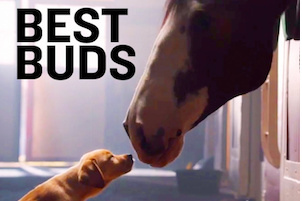 The producers and creators of commercials use a formula that they know will hook the audience.
The producers and creators of commercials use a formula that they know will hook the audience.
It might be humor, a slogan, a jingle, a color, a pet, a celebrity…anything they believe (and market testing shows) will attract positive attention to their product.
It’s up to us, as educators, to pull back the curtain on how these highly persuasive texts might pull an emotional string which makes us remember (or want to purchase) the product or spread the message.
Students need to think like advertisers
When I speak to teachers about advertising, I encourage them to get their students to think as if THEY were advertisers. If you are going to promote a product, then you must know:
• who is my audience?
• what are the best ways to reach them?
• what techniques will I use to get and hold their attention?
• what celebrity or high profile event can I associate with?
• what television programs & websites does my audience follow closely?
• what do I want them to know about my product?
• how can I get them to make a purchase?
Years ago, I developed a series of media literacy/critical thinking questions and posted them on my Super Bowl ads webpage. You’ll find several current links there, including this story about a non-profit in New York that lets youth remix Super Bowl ads in real time. And there’s even SuperBowl-Ads.com, a website that includes information about the commercials featured during the professional football championship game in past years, as well as news about the 2015 commercials (teacher discretion advised).
Questions to consider before the kickoff
Here are some questions you might have your students research and ponder before the game:
► What do you know about the Super Bowl game? Where did you learn it? Why does the game get tremendous media attention every year? What makes advertisers want to show their ads during this once-a-year sporting event? Why does it cost so much to buy just one 30-second ad? What justifies that advertising expense? How do advertisers make money from their Super Bowl spots?
► Students might also use search tools to find out who decides what order the ads air during the game. Why do some ads only run in certain sections of the United States? How do advertisers create buzz about their ads, even before the game is broadcast? They might create a chart listing the known advertisers and research their parent companies.
► They might predict how many ads will be for: alcohol? cars? TV shows? movies? Why are some kinds of ads so popular with Super Bowl advertisers (e.g., beer, wine, liquor)?
► Which propaganda/persuasion techniques would you expect to be used in each ad? Which ad(s) are you looking forward to viewing and why?
Here is one teacher’s Super Bowl assignment for students…
Be on the lookout for not-so-obvious ads during the broadcast – like the Pepsi half-time moments. (Students might want to create a list.)
Based on the ads scheduled to be broadcast, what demographic (gender, age) do you think each advertiser is trying to reach? What social media might be used, if at all, by advertisers during the event window? How do students plan to use social media, it at all, during the game?
(USA Today, online and in the print edition, includes a huge preview of the ads in the Friday issue before the game.)
Questions for after the game
Here are some questions to consider after the game (beyond “Who won, what was the score?”):
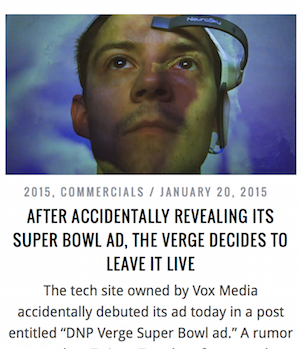 ► What ad(s) did you find most entertaining, and why? (students should be specific and give details here). What ad(s) did you find the most dull/lame, and why? Which ad(s) did you think were most effective in getting viewers to buy or do something, and why? Which ads were for products or services that you couldn’t figure out?
► What ad(s) did you find most entertaining, and why? (students should be specific and give details here). What ad(s) did you find the most dull/lame, and why? Which ad(s) did you think were most effective in getting viewers to buy or do something, and why? Which ads were for products or services that you couldn’t figure out?
► Which ad(s) were you most willing to share (email, likes, retweets) with friends? Which ad(s) featured well-known personalities? Why? Which “techniques of persuasion” were used in each ad? Teachers might want to select appropriate elements from this media investigations checklist and have students match the ads with techniques described on the list.
► Math? Students might calculate the total advertising revenue going to the TV network if each 30 second ad costs an estimated $4.5 million. Older students can do more sophisticated calculations. (An aside: Ads are cheaper if they are targeted at smaller audiences; e.g., the Verge ad above will show in only one Montana city and cost $700. Click it.)
► How do Super Bowl advertisers get mileage for their message before and after the game? How many ads did you spot inside the stadium? How were Twitter, Facebook, Instagram and other social media used during the game to promote the products being advertised? How did you use them, if at all?
► Students might survey classmates, parents, grandparents and ask each to list their 3 favorite ads. Compare and contrast responses. Do some ads appeal to different genders and age groups? Were these the groups the ads were targeting?
Taking the time to use Super Bowl advertising in your classroom and have students discuss their opinions is another great way of demonstrating that popular culture and media literacy have a place in today’s 21st century classrooms.
And YES, educators CAN legally record and use Super Bowl ads in instruction.
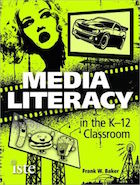 Frank W. Baker is a media literacy education consultant and the author of three books, including Media Literacy in the K-12 Classroom (ISTE, 2012). He contributed two chapters to Mastering Media Literacy (Solution Tree, 2014).
Frank W. Baker is a media literacy education consultant and the author of three books, including Media Literacy in the K-12 Classroom (ISTE, 2012). He contributed two chapters to Mastering Media Literacy (Solution Tree, 2014).
He is a recipient of the National Telemedia Council‘s annual Jessie McCanse Award given for individual contributions to the field of media literacy over at least 10 years. Follow him on Twitter @fbaker and visit his resource-rich website Media Literacy Clearinghouse.
In part two we’ll talk with Frank Baker about the use of social media conversations in real time (whether for applause, advocacy or activism) and the importance of awareness and choice in amplification of voices and participatory action.
Here’s a mini-prequel to part two participatory tools, citing a few campaigns where students, teachers and parents alike may choose to participate on the weekend with hashtags at the ready. (Graphic by Alex Perez via Adweek’s 2015 Super Bowl Ad Tracker)
In Part Two, about participatory social media, watch for:
Representation Project’s #NotBuyingIt hashtag and app to callout sexism, as well as the #MediaWeLike hashtag to celebrate progress in diversity and inclusion.
This year, the 3Percent Conference of women in advertising is aligning in partnership with The Representation Project, hosting a Live Tweet Up complete with ad agency scorecard for accountability. Watch for hashtags like #3percentSB, #changetheratio, #gendergap and such.
The tweetup will be co-hosted by Jennifer Siebel Newsom, director of the documentary films Miss Representation and the newly released The Mask You Live In which premiered at Sundance 2015 this week.
Both films shine the media spotlight on gender representation influencing girls and boys as they grow into adulthood, influenced by media narratives and social norming that need close scrutiny.
This partnership packs a powerful one-two punch, leveraging critical thinking analysis surrounding the media messages produced, while directly calling upon industry pros to raise the bar with a 2015 media resolution toward healthier, more inclusive messaging as agents of change. Brava!
Also watch for countless cause-marketing specific hashtags including our friends from Beauty Redefined.net (the Kite Sisters) who are continuing their campaign to “Cut the Carls” using the #MoreThanMeat hashtag as well as Dunk the Junk’s third annual ‘hashtag hijack’ targeting big soda, positioned as the ‘new tobacco’ in targeting kids with ‘sugar addiction.’
More to come, stay tuned for Part Two…
Please send any hashtags my way if you know of #SB49 ‘ones to watch’ for media literacy educational tools like The Lamp’s Media Breaker, cause-marketing impacting kids, and salutes and sound-offs in social media aiming to create healthier media for us all.

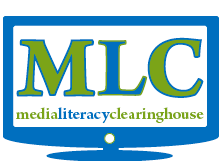









Speak Your Mind